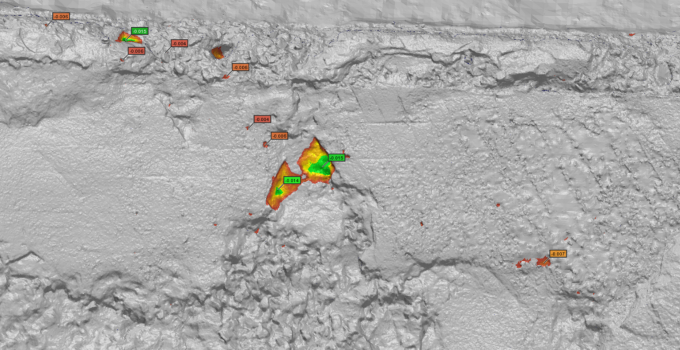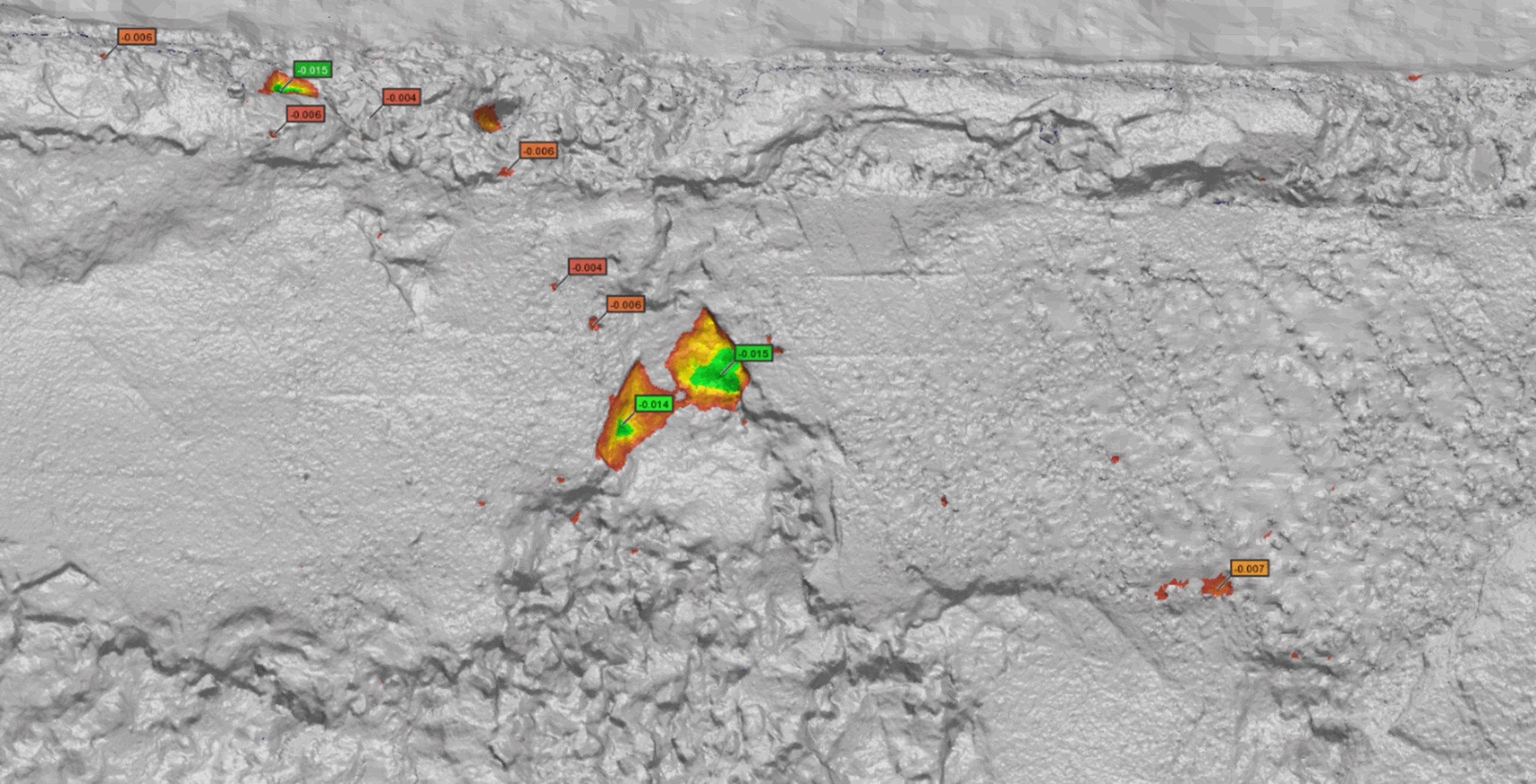Lemonthyme Power Station Dissipator

Client: Hydro Tasmania
Location: Tasmania, Australia
Date: 2024-25
Applying innovative spatial technologies to understand asset condition
Background
Hydro Tasmania’s Lemonthyme Power Station is located in the Lemonthyme Valley near Moina, Tasmania. The hydropower station, fed by Lake Parangana, is part of the Mersey-Forth hydropower scheme. It was commissioned in 1969 and has a generating capacity of 54 MW.
In December 2024, Hydro Tasmania discovered that the water dissipator, an essential component of the power station bypass system for reducing the water forces, had become damaged in operation. The dissipator consists of a concrete outlet with various steel lip baffles designed to reduce the outlet power before discharge into a downstream channel. A metal plate situated at the top of one of these baffles was found to have come loose during operation resulting in wear on the surrounding concrete structure.
Hydro Tasmania engaged Entura’s team of spatial and data management specialists to assess the remaining exposed concrete lip to determine current condition and to monitor material loss. Hydro Tasmania needed this information to determine the ability to operate during the Christmas period and to guide a future design solution.
Solution
Understanding the urgency and implications of the situation, Entura mobilised immediately to conduct an initial survey, followed by 2 further surveys after a limited period of operation.
We used high-resolution photography equipment (a 61 MP camera with a 50 mm lens) to create a photogrammetry textured mesh of the exposed concrete lip. We also used a Leica RTC360 laser scanner to generate a point cloud of the exposed area. The techniques complemented each other, together providing a comprehensive and detailed view of the exposed region. The deviation colour maps that we generated from each survey identified and quantified the location and extent of wear on the concrete.
Outcome
To meet our client’s objective, our team prioritised a quick turnaround of high-quality, reliable spatial data presented in a user-friendly format to aid interpretation. This gave Hydro Tasmania a clear and accurate picture of the situation at the Lemonthyme Power Station within days. Our team’s outputs demonstrated that while some wear was occurring on the dissipator lip, it was unlikely to cause significant future structural damage during limited operation.
With our support, Hydro Tasmania was able to determine that it could safely continue to discharge water over the dissipator over the Christmas period without major risk to the power station infrastructure.
Information provided by the spatial survey was also able to be used in the repair design, informed both the methodology of the repairs and the specific products able to repair the identified localised cavities.
Our spatial and data specialists are proud to be able to rapidly provide our clients with the information they need to make sound operational decisions, prioritise maintenance activities, and keep hydropower assets safe and sustainable long into the future.
Colour map showing the differences between two surveys (units are in metres)
Photographs highlighting changes in condition (locations were identified with colour maps and used to find locations on the original photographs)






